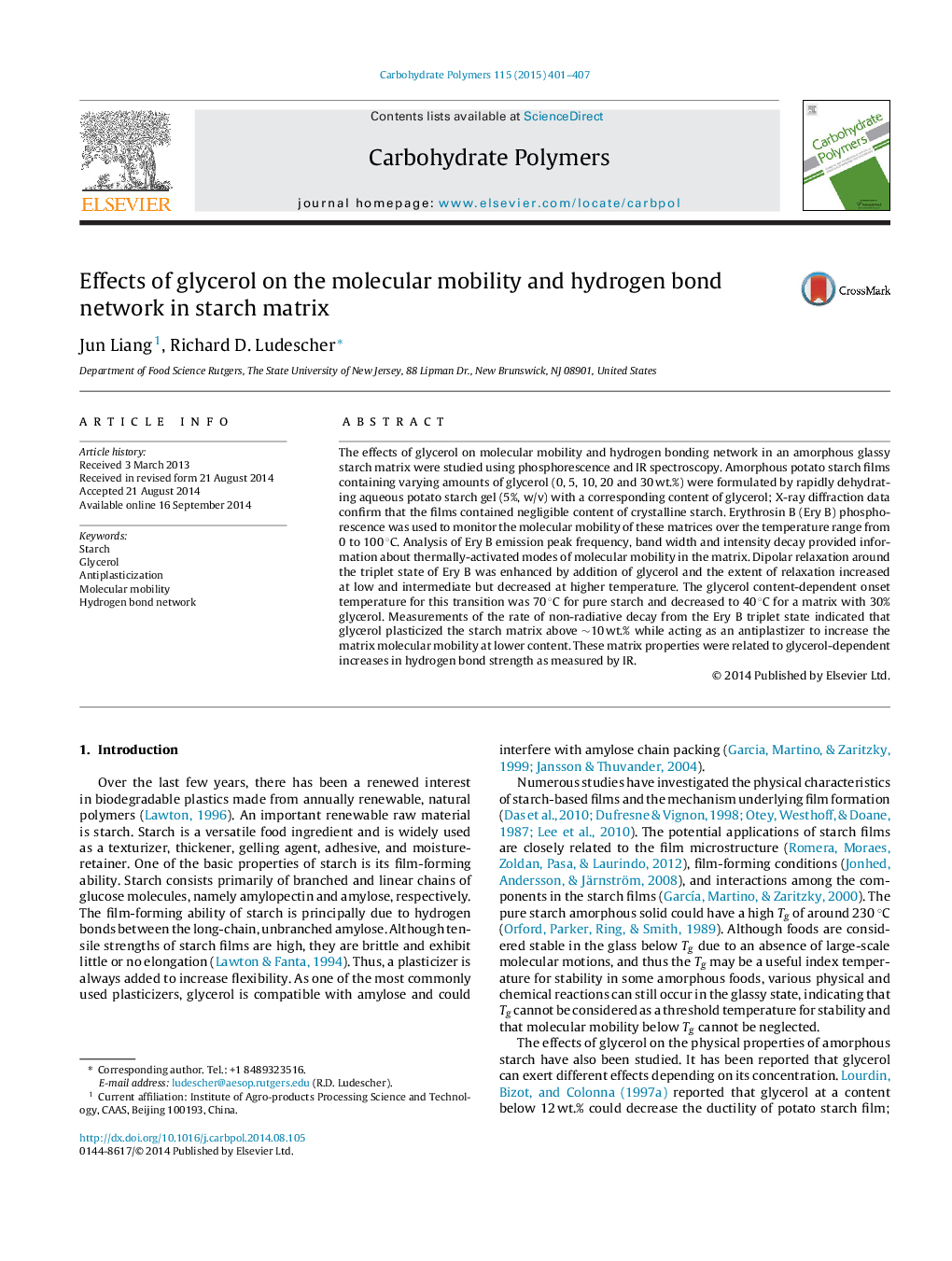| Article ID | Journal | Published Year | Pages | File Type |
|---|---|---|---|---|
| 7790451 | Carbohydrate Polymers | 2015 | 7 Pages |
Abstract
The effects of glycerol on molecular mobility and hydrogen bonding network in an amorphous glassy starch matrix were studied using phosphorescence and IR spectroscopy. Amorphous potato starch films containing varying amounts of glycerol (0, 5, 10, 20 and 30 wt.%) were formulated by rapidly dehydrating aqueous potato starch gel (5%, w/v) with a corresponding content of glycerol; X-ray diffraction data confirm that the films contained negligible content of crystalline starch. Erythrosin B (Ery B) phosphorescence was used to monitor the molecular mobility of these matrices over the temperature range from 0 to 100 °C. Analysis of Ery B emission peak frequency, band width and intensity decay provided information about thermally-activated modes of molecular mobility in the matrix. Dipolar relaxation around the triplet state of Ery B was enhanced by addition of glycerol and the extent of relaxation increased at low and intermediate but decreased at higher temperature. The glycerol content-dependent onset temperature for this transition was 70 °C for pure starch and decreased to 40 °C for a matrix with 30% glycerol. Measurements of the rate of non-radiative decay from the Ery B triplet state indicated that glycerol plasticized the starch matrix above â¼10 wt.% while acting as an antiplastizer to increase the matrix molecular mobility at lower content. These matrix properties were related to glycerol-dependent increases in hydrogen bond strength as measured by IR.
Related Topics
Physical Sciences and Engineering
Chemistry
Organic Chemistry
Authors
Jun Liang, Richard D. Ludescher,
